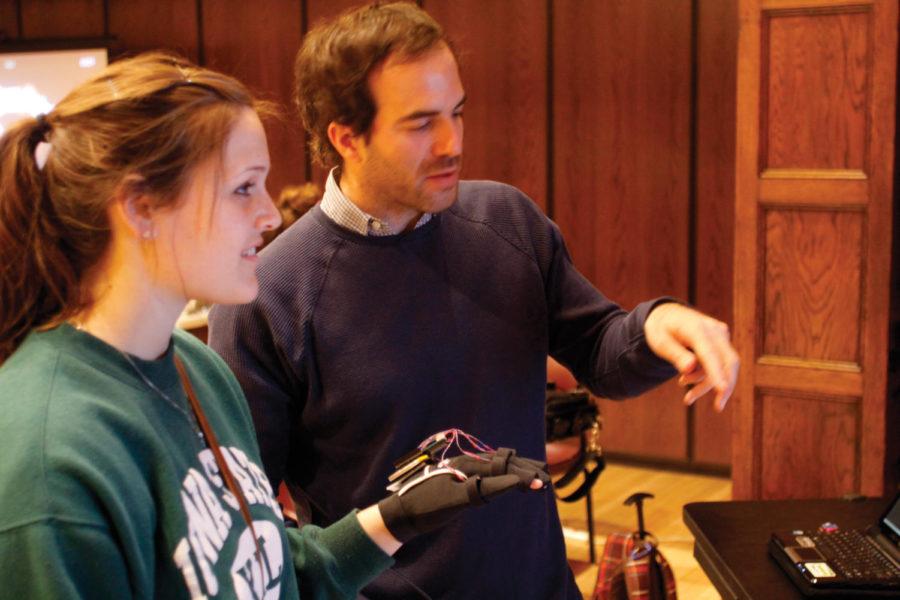Video game competition unites colleges
April 20, 2011
After a little more than eight months, students competing in the ISU Game Development Competition displayed the fruits of their labor for the final time Wednesday.
The competition showcased 15 entries, a number that changed throughout the event, as teams joined the competition as late as February.
“We started [our game] three months ago,” said Jacob Freemyer, senior in computer science and member of the team Entropy. “The initial idea was not to be in this competition. We’re from the same high school … and we said it’d be fun to get together and build a game that we can put on a marketplace.”
Entropy’s entry was one based on the classic “Breakout” game, and they designed it as an Xbox 360, PC and mobile game. Once the team found out about the competition, they decided to pursue one member’s idea of creating a game and began programming an entry of their own.
Competitors chose various approaches to their games that could be entered into one of three different categories: PC games, mobile games or serious games, which have an intentional purpose to inform, educate or persuade, said Christopher Johnson, lecturer in computer science.
Johnson was one of the leaders of the competition, along with Anson Call, associate professor of art and design. The two decided to put together the competition after they saw a need to bring students with similar interests together from different colleges.
“[Anson and I] talked about how … we’ve got a lot of students that really need each other, that have interests in both sides of things, both the creative and design side, but also the technical side of things,” Johnson said.
“We’re so separated normally, that this is really something that’s bringing a lot of people together that wouldn’t necessarily ever work together and it’s been really good because that’s what we’re going to be doing once we graduate,” said Stefanie Dao, senior in integrated studio arts and member of Team Knathos.
Providing this experience allowed students to create a product of their own outside of their classwork. Johnson hopes this type of project will encourage his students to utilize what they learn in the classroom while they’re still in school.
“I feel like as a lecturer, every time I give a homework, that becomes the bar to reach and once they reach it I don’t feel like much learning happens.” Johnson said. “I really want that to be the baseline, the floor of what they learn. And here since I didn’t set up any exact expectations, the students set their own ceilings basically.”
Johnson liked the competition because it provided an intersection between excitement and learning for his students. Students liked the competition because it allowed them to utilize some of the knowledge they’ve gained in their time at Iowa State.
“What I love the most is that I never told anybody what to do,” Johnson said, reflecting on the diversity among the competition’s entries. “They worked really hard and they learned a lot, some folks started from absolutely zero knowledge of how to do all of this.”
Many students credited their teams’ success to their classes at Iowa State, but a passion for video games and prize incentives drove the majority of the teams to compete.
“Having that creative mind and drive to do this kind of stuff I think is the most important thing,” said Ryan Anderson, senior in computer science and member of Entropy.
Entropy members found the feedback provided from the showcase was one of the most valuable aspects of the competition. The team plans to finish their game, which they said was in its “teen stage” at this point and to put it on the market as soon as possible.
In the future, Johnson and Call hope to continue the competition at Iowa State, but weren’t able to reapply for the $50,000 Motorola Foundation grant they received this year due to new restrictions that were placed on it. They hope to keep the competition going as a local event each year, but aren’t certain about its future, Johnson said.







